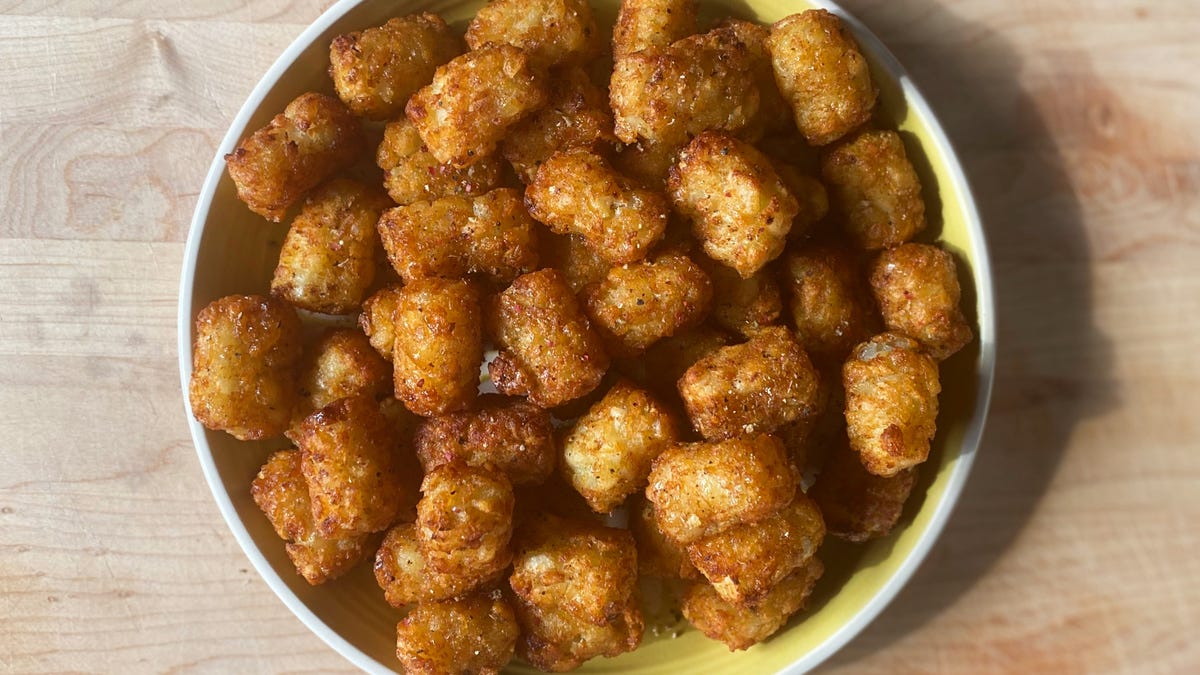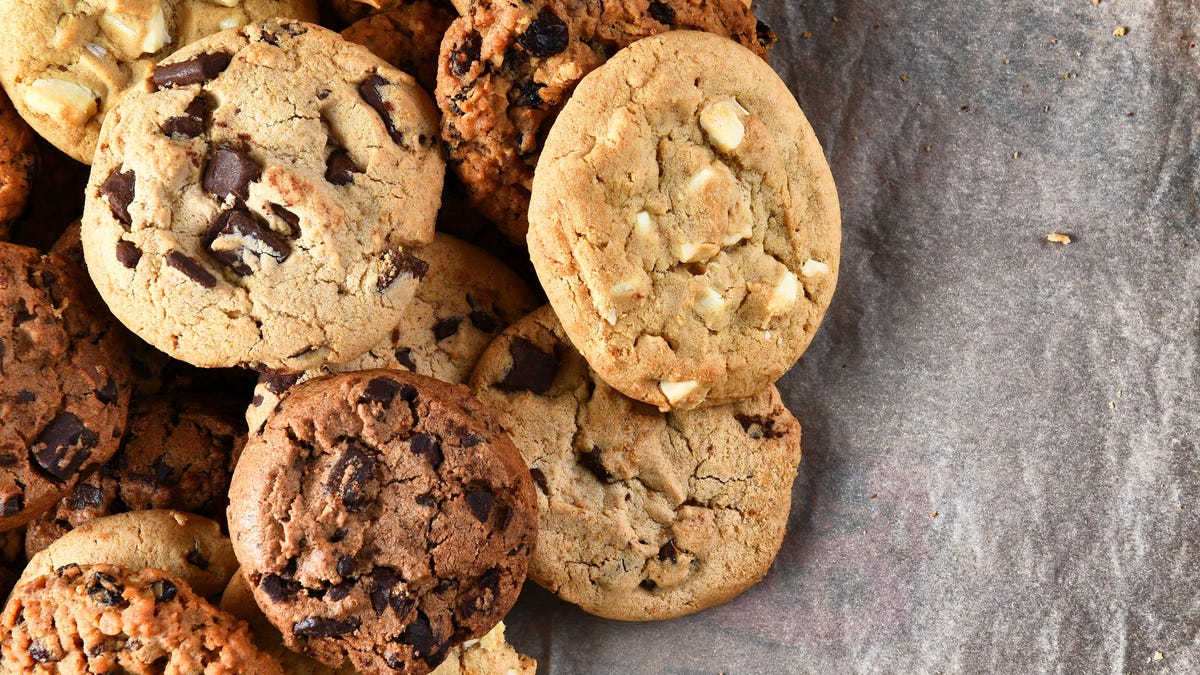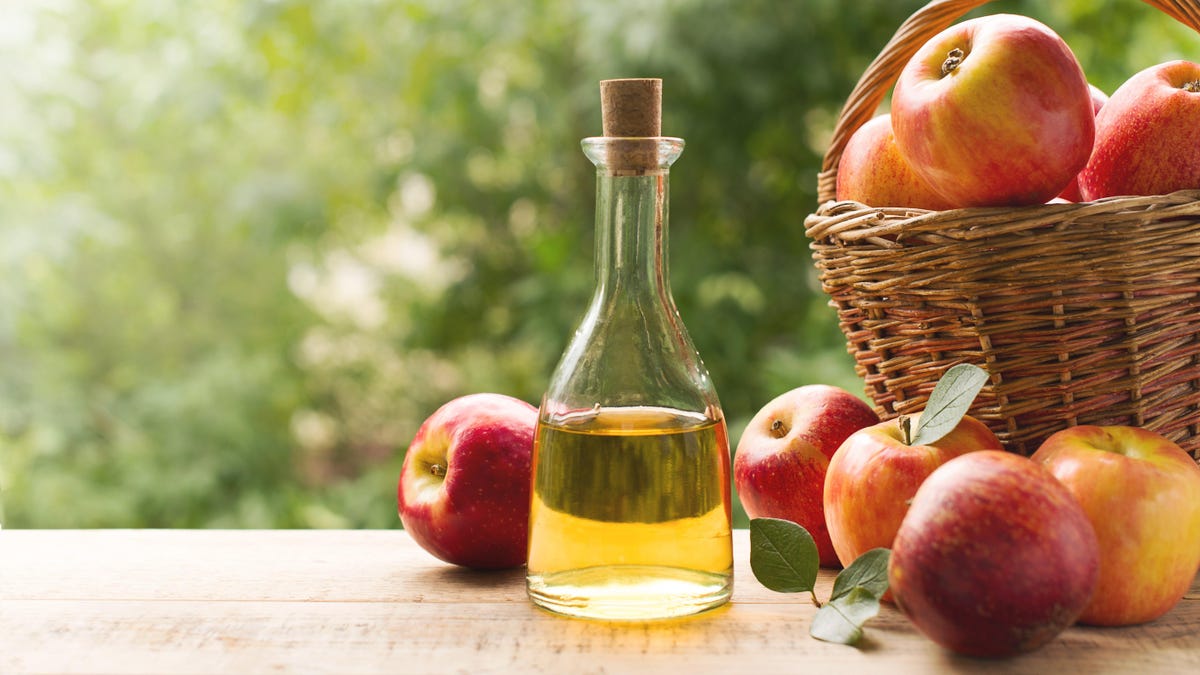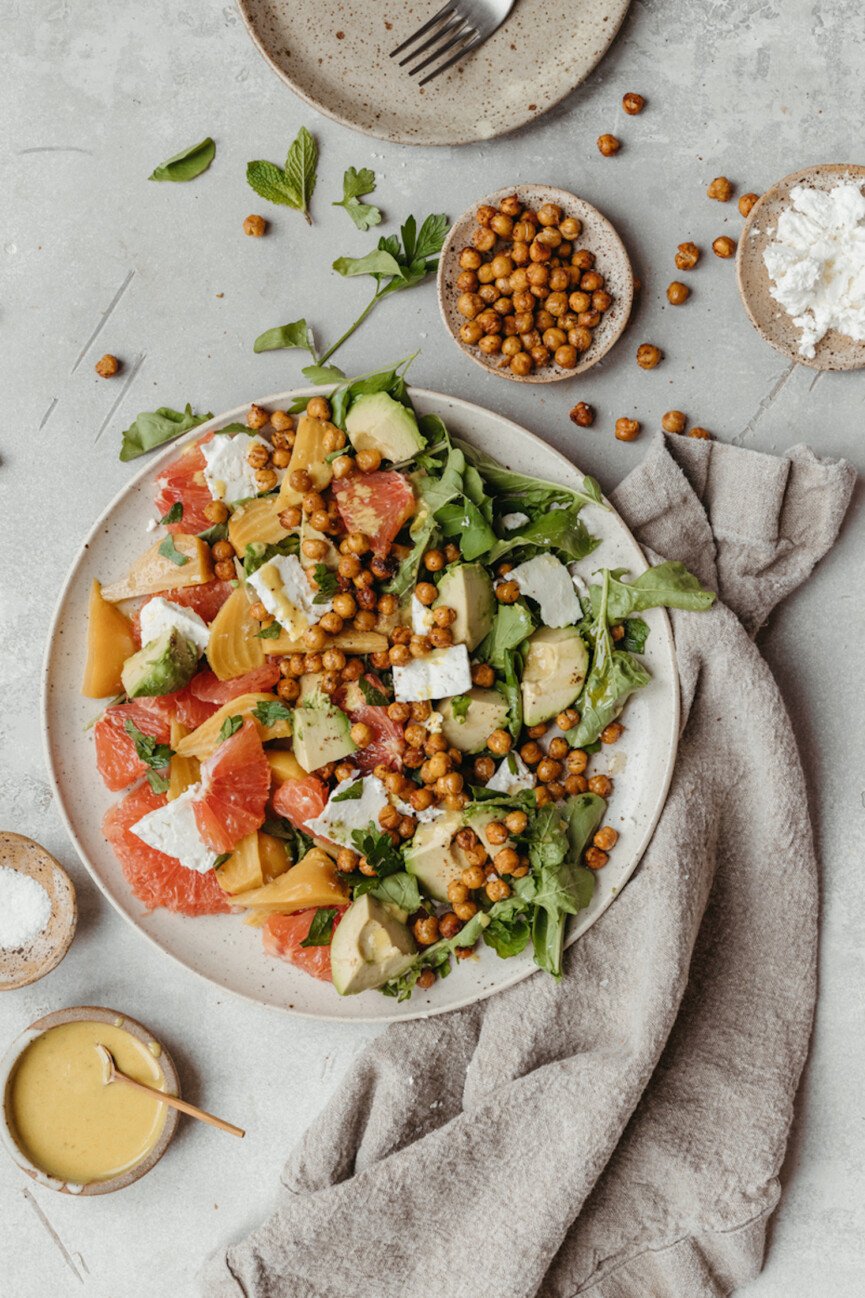Quit Making Boring Scrambled Eggs
Scrambled eggs, as a concept, are straightforward, but there are endless ways to tweak them to manipulate their flavor and consistency. I do not claim to know them all (I just said the possibilities are endless), but I do...
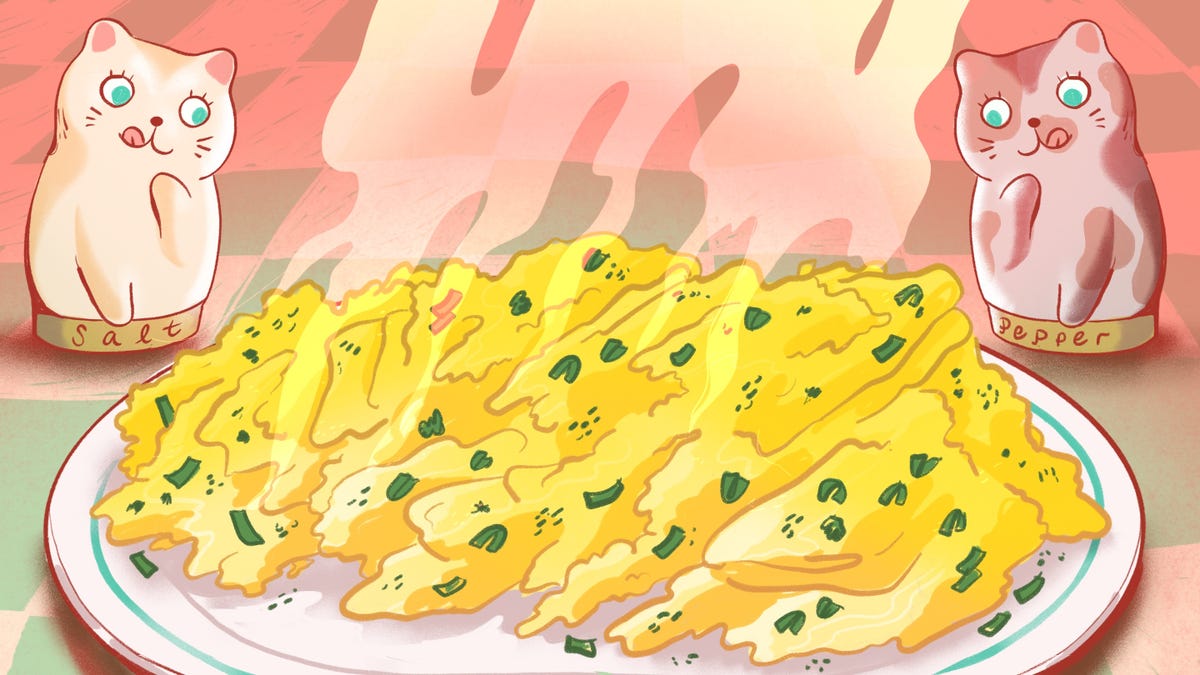
Scrambled eggs, as a concept, are straightforward, but there are endless ways to tweak them to manipulate their flavor and consistency. I do not claim to know them all (I just said the possibilities are endless), but I do have a few favorites I turn to time and again—for both fluffy and creamy scrambles—and I’d love to share them with you now.
Nail the texture with cornstarch or cream of tartar
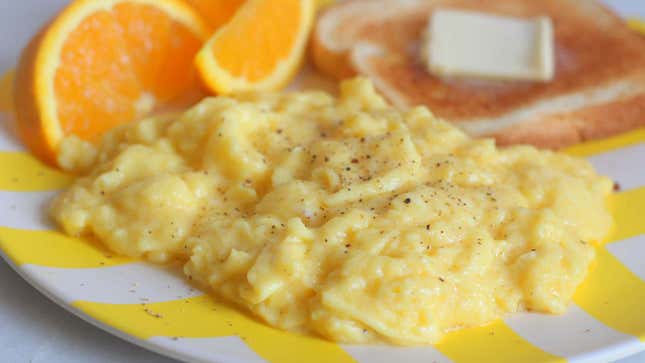
Photo: Claire Lower
If I could offer you only one piece of advice regarding scrambled eggs, it would be “Add cornstarch.” When whisked with a little cream to create a slurry, the common thickening agent produces the most tender, creamy, almost velvety pile of scrambled eggs. They’re so rich, they almost taste cheesy, or perhaps like they were slowly cooked for a long time over very low heat—only they come together in just a few minutes, instead of three quarters of an hour.
If you want fluffy eggs, swap the starch for cream of tartar. Cream of tartar is known for its ability to stabilize the whipped structure of lofty meringues and piles of whipped cream, and there’s no reason it can’t do the same for a pile of fluffy scrambled eggs. You don’t need much—just an eighth of a teaspoon for every two eggs (plus a little salt for flavor). Whisk it all together—use an immersion blender for best results—until the eggs have lightened in color and the mixture is nice and foamy, then pour them into a pan of hot butter and scramble them in long, sweeping motions
Up the flavor
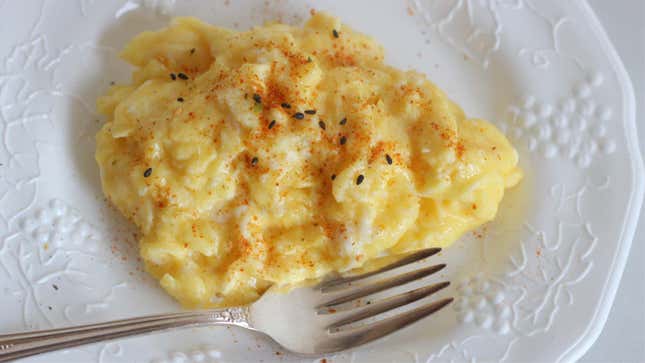
Photo: Claire Lower
The yolk is the best part of the egg. Yolks bring fat, flavor (the flavor of yolk, which is good), and moisture, and adding extra lets you cook them over high heat without drying out your scramble. (If you don’t know what to do with the extra whites you’ll be left with, I suggest whipping them into a cocktail.)
Get the tools for better scrambles:
Our favorite nonstick pan: Tramontina Professional Aluminum 10-Inch Nonstick Restaurant Fry PanA silicone spatula that won’t scratch your pan: Le Creuset Revolution Bi-Material Slotted TurnerA sous-vide circulator, for slow, mostly hands-off scrambling: Anova Culinary Nano Sous Vide Precision CookerIf you want to add a little sweet umami, grab a bottle of mirin. Mirin is the koji-fermented wine responsible for that kind of sweet, kind of savory, completely delightful flavor you find in a wide variety of Japanese dishes, including tomagoyaki (the wonderful rolled omelet). If you are in the mood for that vibe but don’t have time to properly roll your omelet, you can splash a little mirin into your cracked eggs to impart that sweet, slightly funky flavor, then scramble them however you usually do.
If you want a super savory scramble, you can up the umami with onion powder, soy sauce, anchovies, or pure monosodium glutamate.
Make ‘em cheesy (with or without cheese)
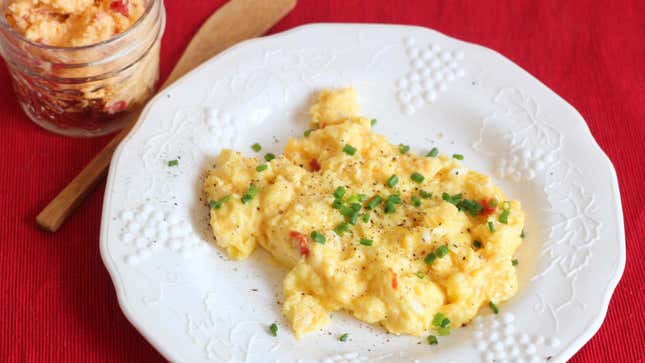
Photo: Claire Lower
If you are a fan of super custardy scrambled eggs with the smallest of curds, I have the recipe for you. They take a while, but cooking them over the lowest possible heat lets the proteins slowly coagulate into a pile of eggs that’s so intensely yolky, vividly orange, and shockingly rich, you’ll swear there’s some cheese in there, but there isn’t, not even a single shred.
If you want the small, cheesy, tender curds of a super slow scramble but don’t want to stand in front of the stove for the better part of an hour, I have great news: You can achieve startlingly similar results by chucking a bunch of eggs—up to two dozen—in a bag and sous vide-ing them. (You’ll have to agitate the bag every once in a while, but other than that it’s a pretty “set it and forget it” process.)
There is, of course, nothing wrong with adding cheese to one’s eggs, but some cheeses are better suited to the job than others, and each one does slightly different work. Shredded cheddars and the like make good “finishing cheeses,” but mixing in some ricotta, cream cheese, or—my personal favorite—pimento cheese before the eggs hit the pan will infuse them with flavor and give them a fantastic texture.
Shake your eggs instead of whisking
When it comes to emulsifying, I have found that shaking tends to do a better job than whisking. Putting things in a jar—or a plastic container with a lid—and shaking the heck out of it will not only give you a super smooth and emulsified vinaigrette, but a scramble that’s completely homogeneous in both color and texture—all in about 10 seconds.

 BigThink
BigThink 







